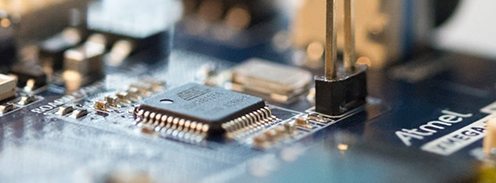Savvy smartphone users know the names of the chip companies that make the processors and modems inside their devices, but most have never heard of the companies that make the accelerometers, the gyroscopes, or the ambient light sensors.
“Sensors are the fastest growing segment of the cell phone chip market,” said Will Strauss of Forward Concepts. “It’s an opportunity for no-name companies to make it big because Qualcomm doesn’t make sensors, Apple doesn’t make sensors, Samsung doesn’t make sensors –they come from companies you never heard of.” Companies like Atmel and AKM Semiconductor are hardly household names, but they are well known to the buyers of smartphone sensors.
STMicroelectronics and Bosch are two of the largest makers of smartphone sensors, while most of the other players are much smaller companies like. Over the next few years some of these chipmakers may be acquired by larger semiconductor companies or by device manufacturers, as PrimeSense and Authentec were acquired by Apple. Authentec’s fingerprint sensor showed up in the iPhone 5s, and the PrimeSense 3D sensor is expected to be part of future Apple TV initiatives.
Accelerometers, electromechanical devices that measure acceleration, are the smartphone sensors which currently ship in the highest volume, according to Forward Concepts. Along with other sensors called gyroscopes, they sense which way the phone is being held, and adjust the image on the screen accordingly. Watching a video or texting with a smartphone that is held horizontally would not work without the accelerometer and the gyroscope.
Most modern smartphones also include a compass sensor, a light sensor and a proximity sensor. The compass sensor can be accessed by the user via an on-board compass application. Proximity sensors and light sensors save battery by dimming the display when a well-lit display is not needed. The light sensor optimizes the display depending on ambient light conditions, and the proximity sensor dims the display when the user holds the phone to the side of his or her face for a conversation.
Gesture sensors are emerging as an area of keen interest to smartphone makers. These will enable the user to control the smartphone screen without touching it, opening up many new gaming possibilities. Pantech recently launched the Vega LTE with a gesture sensor to enable hands-free screen control.
Movement is not the only input from the human body that can be measured by smartphone sensors. Heart rate, blood pressure and sleep patterns can also be monitored by phones kept close to their users. “If the phone or the Bluetooth headset is able to monitor and measure the heart rate, blood pressure, etc. while I’m on the phone then it can build up a profile of me that my doctor will never build up because they see you once every few months,” said Chris Hare, founder of The nTete Group. “That data can either automatically or on demand be uploaded to my healthcare provider so that they know what I’m doing and how I’m doing it.”

